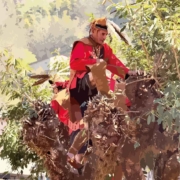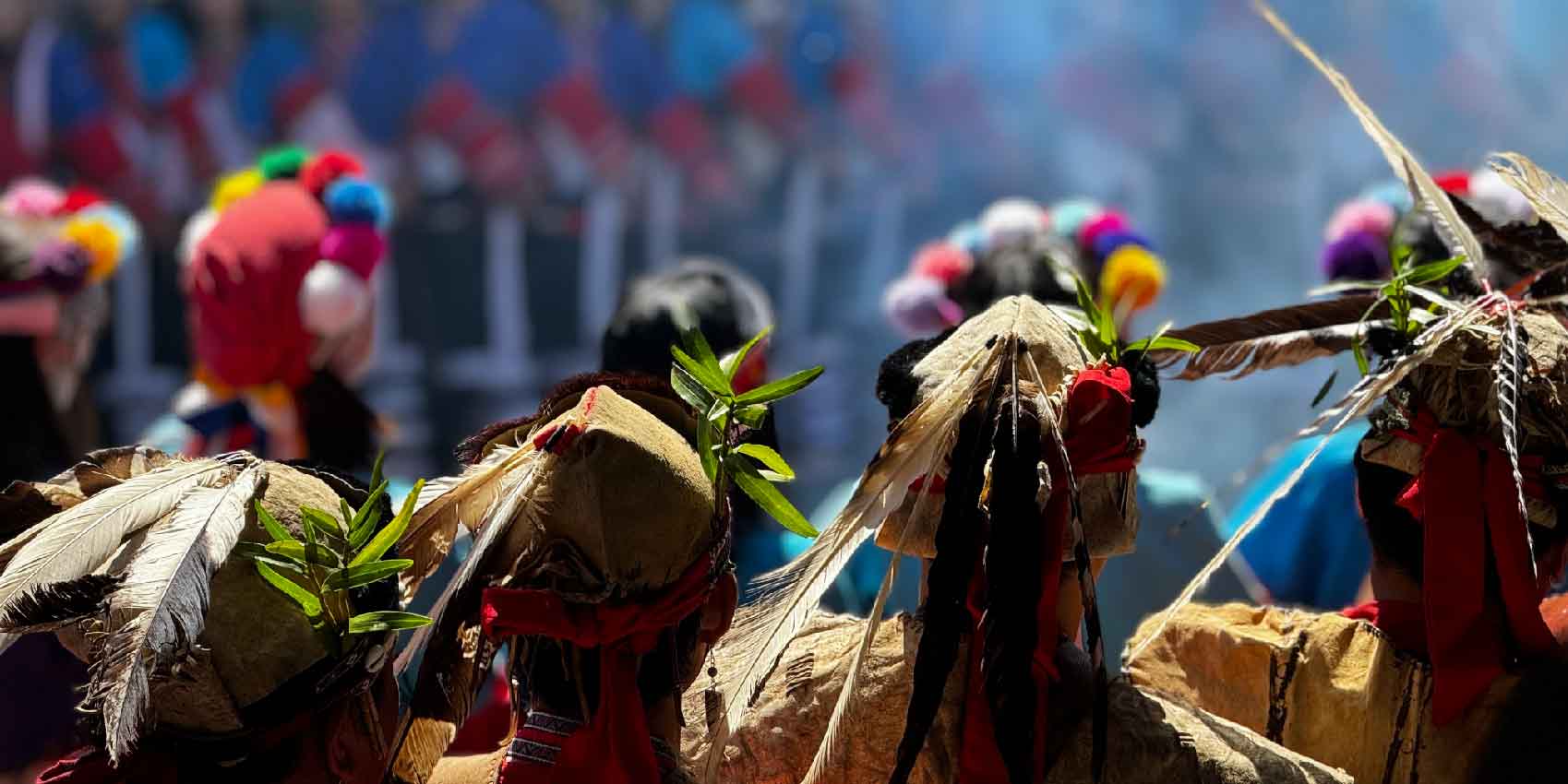鄒族 文化狩獵特質
(如果轉摘對著作者有侵權之處,請聯繫逐鹿文創園區小編我們會即刻刪除。)
森林探戈─野生動物與獵人之間
本文旨在初步探討鄒族在狩獵文化脈絡下的動物知識與慣習,名為「狩獵動物學」,聚焦狩獵活動涉及的重要動物類別1,包括mayuyuangsou獸類、mazozomx鳥類以及mayoyoskx魚類三種2,屬民族動物學(ethnozoology)範圍。惟鄒人生活相關的動物種類繁多,整體動物概念也龐雜,例如鄒人稱yoi的動物,就包括各種昆蟲類、蛇類、蚚蜴等等,snosnoecavx是指有別於野生動物的所有家畜,這些動物有些經由鄒人命名,有部份可以利用或賦予文化意義,應該視為更大的「鄒族動物學」範疇,基本上有些動物與狩獵沒有太大關係,僅簡約討論。一般動物學,指的是研究動物的種類、形態、生理構造、生活習性、發展及進化史、遺傳及行為特徵、分布、以及與環境間相互關係的生物科學,而民族動物學則是以民族學理論視角探討人類與動動物關係,包括動物的認知、命名、利用、慣習以及賦予文化意義的現象。本文採取民族動物學方法論去探討鄒族狩獵動物學,藉此耙梳鄒族狩獵動物學的基本輪廓。狩獵活動乃傳統鄒族重要的經濟生產方式,《臺灣省通誌稿》就提及曹族是一個「嗜獵如命」的族群。從中可以想像野生動物與鄒人之間的緊密關連,彷彿森林探戈,彼此之間互動共生又緊密相連。
阿里山曹族之原始文化無疑為狩獵文化。該族過去的戰爭與遷徙之主要原因為獵地之取得,氏族宗家之主要象徵物獸骨架tovofusuya以象徵獵神,粟祭為meesi no ton’u中有儀式的狩獵,為祭儀之最主要部份。該族男子之原始衣服自帽至衣履幾全以鹿皮為之。該族之獵區hupa為氏族所有,但聯族間可以共用或互用。獵場獵得之獲物必分贈於同氏族人,及聯族之共獵者cono hupa,及獵場所有主之氏族曰himho hupa;由此等遺制皆可以證明狩獵為曹族之原始生產方式。雖然後來農業已代替了狩獵成為最重要之生產手段,但該族至今仍嗜獵如命,故事雜談以狩獵為主題,其狩獵技術亦極精巧。(衛惠林等 1951:57)
文獻點出鄒族狩獵文化幾個核心要素,如獵地、獸骨架、獸皮衣飾、獵神、獵場分配與使用、獵物分配以及狩獵技術等,由此觀之狩獵在鄒人生活的重要性,其過程可視為一整套社會文化行為,其中是獵人、獵物以及獵場所構築的文化網。從日治時期開始就有不少民族誌記錄鄒族的主要獵物3,包括山豬、水鹿、山羊、山羌以及幾種較大型的鳥類,包括各類漁獲,如鯝魚、岩鰍等,也記錄一些動物神話故事以及鄒人關於動物的利用(食用及獸皮製品等)、禁忌(可獵/禁獵、可食/禁食、鳥占等)、狩獵方式以及漁撈技術,這些記錄算是鄒人關於動物知識與慣習的重要文獻。2001年阿里山鄉公所出版之《阿里山鄉志》第四篇為〈動物志〉,內容包括阿里山地區之主要動物種類,比較特別是討論到「動物與人類的活動」,描述一些動物的民俗意義,特別是鄒族的鳥占文化做了詳細的記錄,內容已初步涉及民族動物學的討論(王嵩山等 2001)。基於狩獵活動,鄒人自然與動物形成互動關係,鄒人因此累積並傳承與動物相關的知識與慣習。動物、獵人與鄒族文化之間的關係,似是抽象卻真實存在。本文參酌相關文獻及實際部落調查資料,首先從山豬解剖過程理解鄒人擁有的動物知識、利用及分配方式,屬鄒人的山豬形態學;其次,舉野生動物的例子,包括獸類、鳥類以及魚蝦等三種,說明鄒人關於動物的知識與慣習;再者,綜合探討鄒人如何將野生動物賦予社會文化意義;最後初步界定「鄒族狩獵動物學」的意義範疇。這是雜揉自然科學、社會、文化以及宗教等多重面向的文化研究,有異於傳統、純粹自然的動物科學,本文名之為「鄒族狩獵動物學」,並以實證資料探其精微。
引用資料 : https://ihc.cip.gov.tw/EJournal/EJournalCat/631
Forest Tango – Between Wild Animals and Hunters
This article aims to preliminarily explore the animal knowledge and habits of the Tsou people in the context of hunting culture, called “Hunting Zoology”, focusing on the important animal categories1 involved in hunting activities, including mayuyuangsou mammals, mazozomx birds, and mayyoskx fish. Species 2 belongs to the scope of ethnozoology. However, there are many types of animals related to the lives of the Tsou people, and the overall concept of animals is also complex. For example, the animals that the Tsou people call yoi include various insects, snakes, earthworms, etc. snosnoecavx refers to all domestic animals that are different from wild animals. Some of these animals are named by Tsou people, and some can be used or given cultural significance. They should be regarded as a larger category of “Tsou zoology”. Basically, some animals have little to do with hunting and will only be briefly discussed. General zoology refers to the biological science that studies the species, morphology, physiological structure, living habits, development and evolutionary history, genetic and behavioral characteristics, distribution, and interaction with the environment of animals. Ethnozoology is the study of the relationship between people and the environment. It explores the relationship between humans and animals from a theoretical perspective, including the cognition, naming, utilization, habits and cultural significance of animals. This article adopts ethnozoological methodology to explore the hunting zoology of the Tsou people, thereby combing the basic outline of the hunting zoology of the Tsou people. Hunting is an important method of economic production for the traditional Tsou people. The “Taiwan Provincial Announcement Draft” mentions that the Tsou people are an ethnic group that “loves hunting as much as their lives.” From this, we can imagine the close relationship between wild animals and Tsou people, like forest tango, interacting, symbiotic, and closely connected with each other.
The original culture of the Cao people in Alishan is undoubtedly a hunting culture. The main reason for the tribe’s past wars and migrations was the acquisition of hunting land. The main symbol of the clan clan is the animal skeleton tovofusuya, which symbolizes the god of hunting. The millet festival is the ritual hunting in meesi no ton’u, which is the most important part of the ritual. part. The original clothing of the men of this tribe, from their hats to their shoes, was all made of deerskin. The hunting area hupa of this clan is owned by the clan, but it can be shared or used by other clans. The catch from the hunting ground must be distributed among the people of the same clan, as well as the co-hunters of the joint clan (cono hupa), and the clan that owns the hunting ground is called himho hupa. These legacy systems can prove that hunting is the original production method of the Cao people. Although agriculture has later replaced hunting as the most important means of production, this tribe is still addicted to hunting. Their stories and stories are based on hunting, and their hunting techniques are also extremely sophisticated. (Wei Huilin et al. 1951: 57)
The literature points out several core elements of the Tsou people’s hunting culture, such as hunting grounds, animal skeletons, animal skin clothing, hunting gods, distribution and use of hunting grounds, prey distribution, and hunting techniques. From this, we can see the importance of hunting in the lives of the Tsou people. , the process can be regarded as a set of social and cultural behaviors, including the cultural network built by hunters, prey and hunting places. Since the Japanese colonial period, there have been many ethnographic records of the main prey of the Tsou people3, including wild boars, sambar deer, goats, mountain sheep, and several larger birds, including various types of catches, such as pomfret, rock carp, and rock carp. It also records some animal myths and stories and the Tsou people’s use of animals (eating and animal skin products, etc.), taboos (hunting/forbidden, edible/fasting, bird appropriation, etc.), hunting methods and fishing techniques. , these records can be regarded as important documents about animal knowledge and habits of the Tsou people. The fourth chapter of “Alishan Township Chronicles” published by the Alishan Township Office in 2001 is “Animal Chronicles”. The content includes the main animal species in the Alishan area, especially discussing “animals and human activities” and describing some animals. The folklore significance, especially the bird divination culture of the Tsou people, has been recorded in detail, and the content has initially involved ethnozoological discussions (Wang Songshan et al. 2001). Based on hunting activities, the Tsou people naturally form an interactive relationship with animals. As a result, the Tsou people accumulate and pass on animal-related knowledge and habits. The relationship between animals, hunters and Tsou culture seems abstract but real. This article refers to relevant literature and actual tribal survey data, firstly, from the dissection process of mountain pigs, to understand the animal knowledge, utilization and distribution methods of the Tsou people, and the morphology of the mountain pigs belonging to the Tsou people; secondly, it gives examples of wild animals, including mammals, Three species, including birds, fish and shrimp, illustrate the Tsou people’s knowledge and habits about animals; secondly, it comprehensively explores how the Tsou people endow wild animals with social and cultural significance; and finally, it preliminarily defines the meaning scope of “Tsou people’s hunting zoology”. This is a cultural study that combines natural science, society, culture, religion and other aspects. It is different from the traditional and purely natural animal science. This article is called “Tsou hunting zoology” and uses empirical data to explore its subtleties.
Citation information: https://ihc.cip.gov.tw/EJournal/EJournalCat/631





